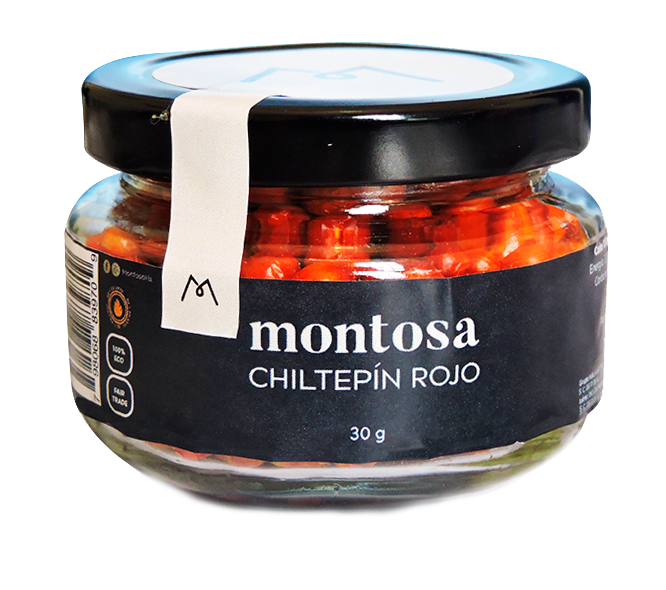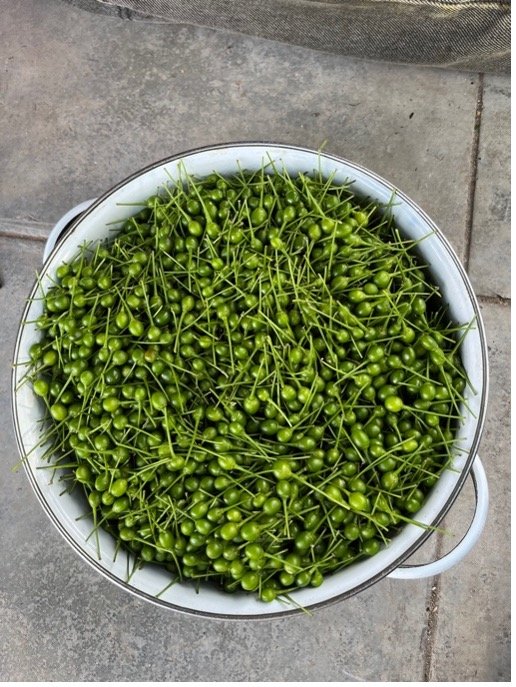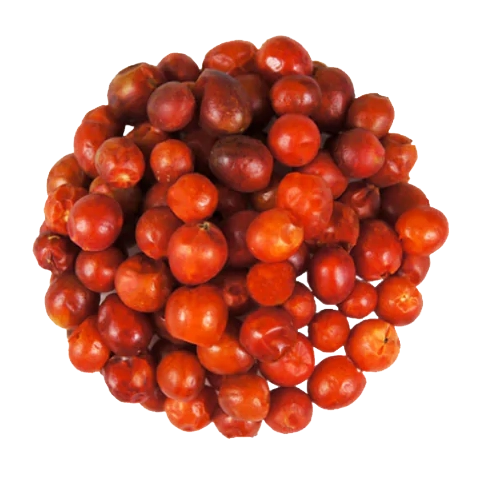
Origin and History
The chiltepín is considered one of the ancestors of domesticated chilis. Its use and
cultivation date back to pre-Hispanic times when the indigenous peoples of the region
used it in their daily diet and in ceremonies. The name “chiltepín” comes from the
Nahuatl “chiltecpintl,” which means “flea chili,” referring to its small size.
Characteristics
The chiltepín is a small, round, red chili when ripe. It is known for its intense spiciness
despite its tiny size. It grows wild on shrubs that can reach up to two meters in height
and is found mainly in the mountainous and arid areas of the Sierra of Sonora.


Traditional Use
In Sonoran cuisine, the chiltepín is used in various ways. It can be consumed fresh,
dried, or ground, and is a key ingredient in many regional sauces and dishes. Besides
its culinary use, the chiltepín has medicinal properties. Traditionally, it has been used to
treat various ailments, such as digestive and respiratory problems.
Cultural and Economic Importance
Chiltepín holds a special value for the indigenous and rural communities of Sonora. The harvesting of wild chiltepín is an important economic activity for many families, especially during the harvest season. Additionally, chiltepín is a symbol of regional identity and is celebrated in local festivals and events.

Cultural and Economic Importance
The cultural and economic importance of the chiltepín is significant for the communities
of the Sierra of Sonora and beyond. This small and spicy chili is not only an essential
ingredient in local cuisine but also represents a symbol of identity and a source of
income for many families. Below is its importance in these aspects:
Cultural
Symbol of Regional Identity:
The chiltepín is an emblem of Sonoran culture. It is known as “the mother of all chilis”
due to its antiquity and its relationship with domesticated chili varieties.
Culinary Traditions:
The chiltepín is used in a variety of dishes and sauces that are essential in local
gastronomy. Its distinctive spiciness and unique flavor make it an indispensable
ingredient in Sonoran cuisine.
Economic
Source of Income:
Harvesting and selling wild chiltepín are crucial economic activities for many families in
rural areas of Sonora. During the harvest season, families gather these chilis, which are
then sold in local and national markets.
Production and Trade:
In addition to wild harvesting, some communities have begun cultivating chiltepín
sustainably to ensure a constant supply and reduce pressure on wild populations.
Economic Diversification:
Economic activity related to chiltepín helps diversify income sources in rural
communities, which often rely on agriculture and livestock.


